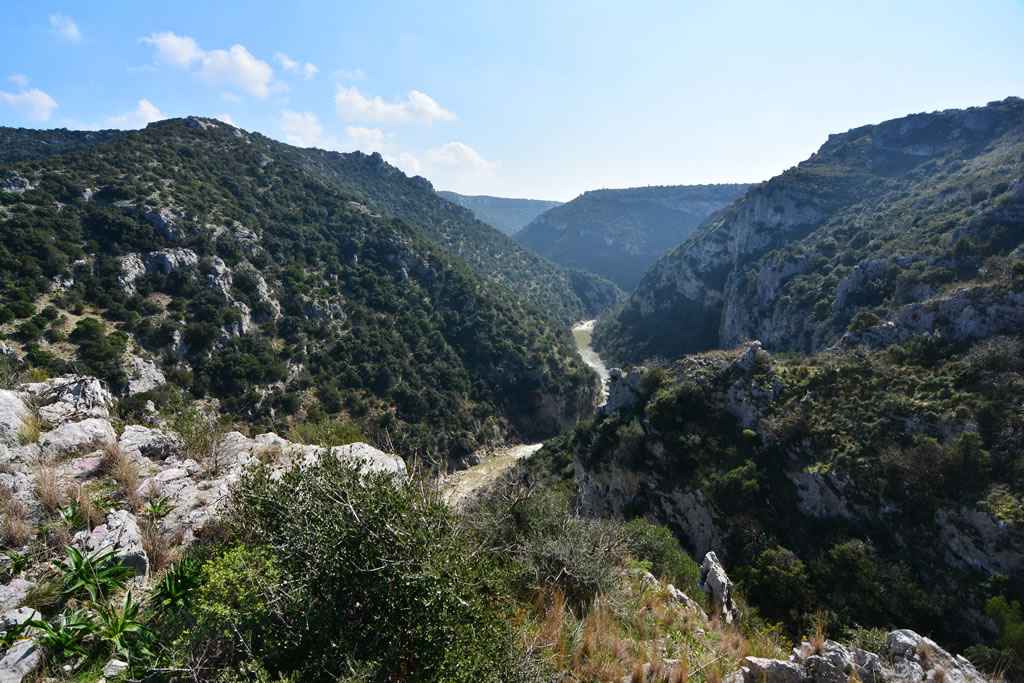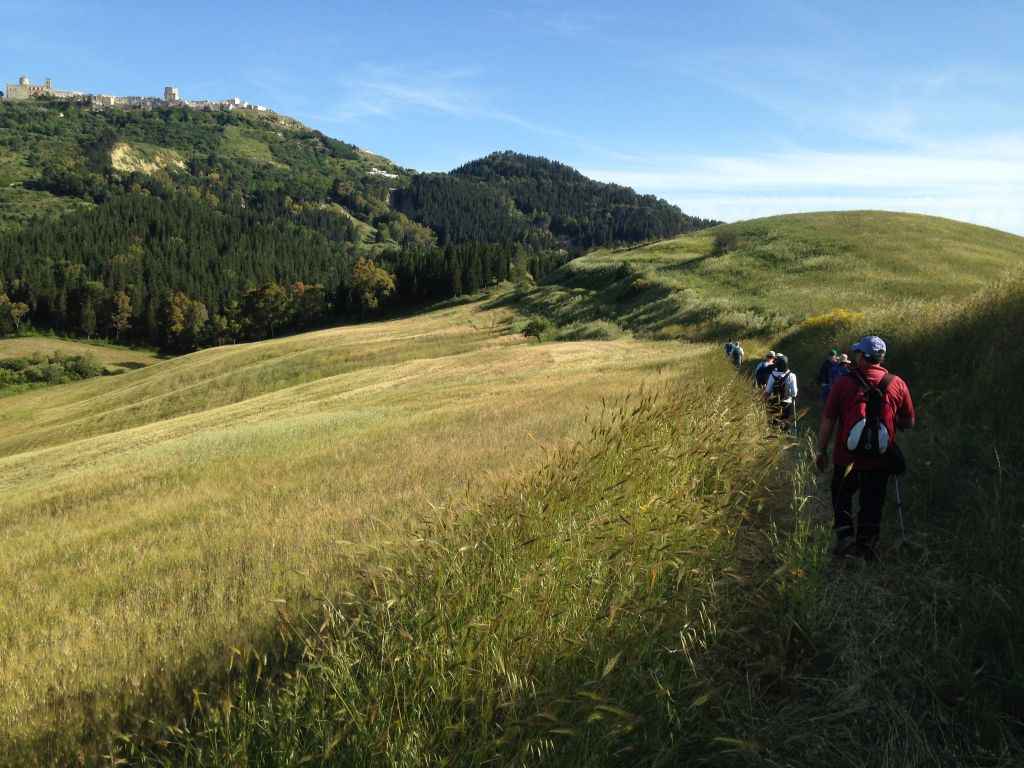





Although the frequentation of the area is documented since the Bronze Age, the formation of the first inhabited nucleus is attested around the IX-VIII centuries BC.
The proximity of the Peucetian village to the Greek colony of Metaponto led to the construction of an imposing surrounding wall, dated IV - III century. B.C. The reason may have been the permanent semi-conflictual state between the Greek cities and the Italic centers or the recurring wars such as the Punic, Samnite and Hannibal wars. The walls remained efficient even in the late Republican age. A section of that survives today, visible in a small urban archaeological park. Romanization led to a change in the exploitation of the territory, with the reduction of the number of farms and therefore of the population. A public building was inaugurated in the city, of which there remains a tarpaulin and a floor mosaic that recalls the arrival of 4 magistrates from Rome. The toponym of Civitas Severiana, reported in medieval documents, suggests an ancient Roman name deriving, like other Lucanian sites during Roman imperial period, from toponyms connected to vast parental aggregations settled in the territory, perhaps Gens Severa or Severiana, of not clear origin. Montescaglioso thus loses importance, the inhabited area got smaller and the territory was dotted by rustic villas, run by slaves, as proved by recent archaeological investigations. In the early medieval period Montescaglioso is attested in a series of documents: as early as the 6th century A.D. the monk Guidone, in his journey during the Gothic-Byzantine war, mentions the town; in 893 the city is remembered in a document from the Lombard abbey of S. Vincenzo al Volturno, as Castrum Montis Caveosi.

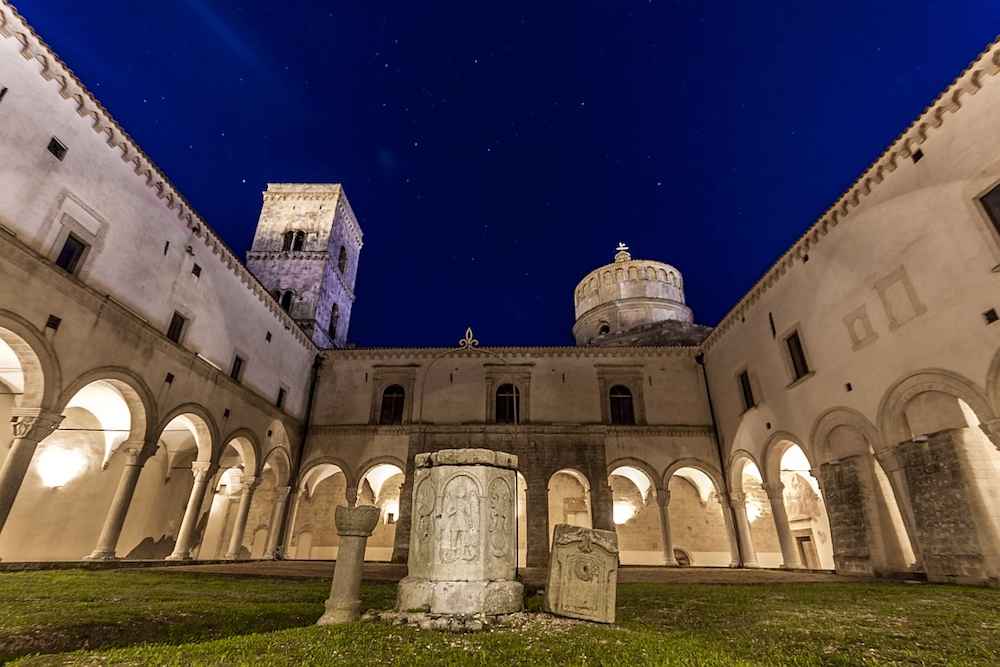
Later the Norman presence enhanced urban development and demographic increase of the city, as well as the establishment of a large Benedictine monastic community in the abbey of S. Michele Arcangelo marking the history of Montescaglioso until the 19th century. Other monasteries also settled in Montescaglioso. In the mid-fifteenth century the Augustinians built their convent. At the end of the sixteenth century, the Capuchin Fathers settled, building their convent on a hill overlooking the city. Finally in the first half of the seventeenth century, there is a female monastery, the SS. Conception, which adopts the Benedictine rule. With the presence of four monastic complexes, of which the Benedictine Abbey of San Michele Arcangelo remains the most considerable, the city of Montescaglioso gained the definition of "City of Monasteries".
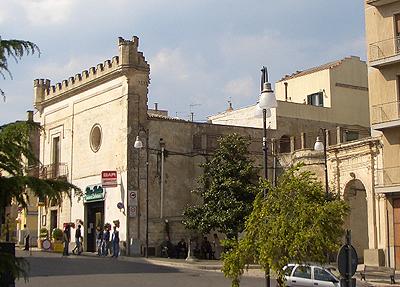 The Norman castle of Montescaglioso was erected by the Norman Macabeo family at the end of the 11th century to control the Porta Maggiore (one of the 6 existing ones), it was organized around a courtyard which is accessed by a portal flanked by one of the two surviving towers . The central tower, with a quadrangular plan, is now unrecognizable due to a series of modern readjustments. The church of S. Caterina was annexed to the castle, now being a bar.
The Norman castle of Montescaglioso was erected by the Norman Macabeo family at the end of the 11th century to control the Porta Maggiore (one of the 6 existing ones), it was organized around a courtyard which is accessed by a portal flanked by one of the two surviving towers . The central tower, with a quadrangular plan, is now unrecognizable due to a series of modern readjustments. The church of S. Caterina was annexed to the castle, now being a bar.
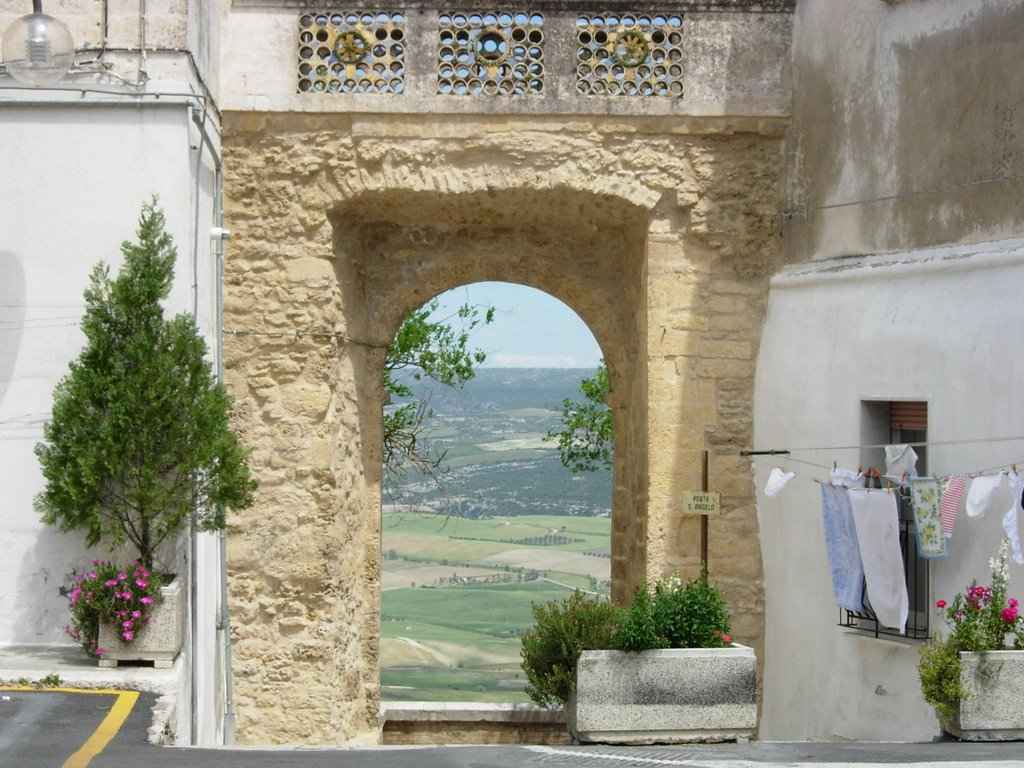 The only one of the six access gates left standing is Porta Sant’Angelo, which can be admired right in the square in front of the Abbey of San Michele. The most important, Porta Maggiore, was demolished in 1868. The Norman wall, in fact, remained intact until the mid-nineteenth century, when the walls were demolished.
The only one of the six access gates left standing is Porta Sant’Angelo, which can be admired right in the square in front of the Abbey of San Michele. The most important, Porta Maggiore, was demolished in 1868. The Norman wall, in fact, remained intact until the mid-nineteenth century, when the walls were demolished.
The municipal area of Montescaglioso shares with the Matera capital, the regional park of the Murgia Materana which extends over about 8000 hectares, characterized by the presence of deep ravines, where man excavated entire villages, sheepfolds, cisterns and above all, rock churches. In the countryside of Montescaglioso there are the oldest cave churches, probably due to the fact that the Byzantine presence continued uninterruptedly throughout the early Middle Ages.
